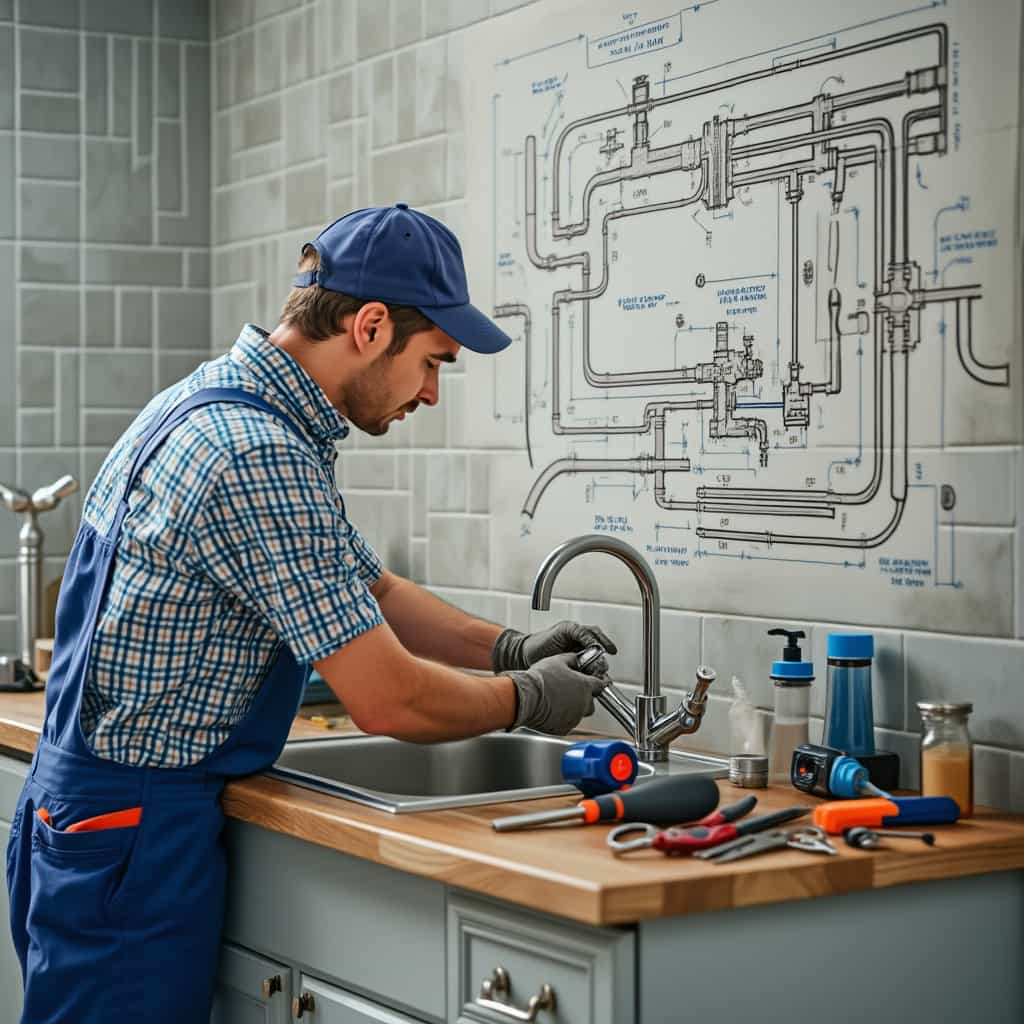For many homeowners, the mere thought of plumbing issues conjures images of water pooling on the floor, unexpectedly high water bills, or even worse, permanent water damage that could cost thousands to repair. Plumbing problems, though often attributed to sudden failures, tend to develop slowly. Leaks, blockages, and fixture deterioration can lead to severe issues if not addressed promptly. This complexity often forces homeowners to consider various repair options ranging from DIY solutions to professional services.
When tackling plumbing repairs, scale and severity are critical factors in deciding whether to take a DIY approach or hire a professional plumber. Minor issues like a leaky faucet or a running toilet may tempt a handy homeowner to grab a wrench and attempt repairs themselves. However, more severe issues, such as a burst pipe or substantial pipe blockage, usually necessitate the expertise of licensed professionals who can diagnose and remedy these problems efficiently.
Interestingly, the choice between DIY and professional repair can also be influenced by geographic locations and local service markets. For instance, homeowners in urban areas might find it easier and more cost-effective to hire professionals due to the high density of plumbing services available. Conversely, those in rural areas might lean more towards DIY due to limited access to professionals and higher service call fees.
When considering professional plumbing services, there are options aplenty. Full-service plumbing companies offer a wide array of services, often providing comprehensive solutions to complex issues. These services can be crucial for intricate problems that require the coordination of multiple repairs or replacements. Alternatively, independent plumbers, who might offer more competitive pricing, are an option for simpler jobs.
One key factor to examine when choosing a plumbing service is cost. The cost of hiring a plumber can vary widely based on location, the complexity of the repair, and the individual plumber or company’s rates. For example, a simple drain cleaning could range from $100 to $300 based on these factors, while a more complex job like replacing pipes might exceed $5,000. To keep costs down, some homeowners opt for a combination of DIY and professional assistance, handling what they can themselves and leaving the rest to the experts.
Geographic variability adds another layer of complexity to the pricing of plumbing repairs. In cities like New York or San Francisco, the cost for plumbing repairs tends to be higher compared to smaller cities or rural areas. This discrepancy often correlates with the cost of living; areas with a high cost of living generally see higher service fees. In contrast, regions with lower living costs often provide more affordable plumbing services.
Another factor to consider when deciding on plumbing repairs is the potential long-term savings associated with regular maintenance and timely repairs. Preventative maintenance such as routine inspections and minor fixes can help homeowners avoid costly emergency repairs, which can save significant expenses over time. Experts in home maintenance underline the value of investing in quality repairs over cutting costs initially, as improper fixes can lead to recurrent issues and further financial strain.
When examining proposals from plumbing services, it’s essential to look beyond the quoted price. Homeowners should evaluate the scope of services covered, the guarantee or warranty offered, and the plumber’s reputation. Reviews, both online and word-of-mouth, can provide insight into the quality of service provided, helping homeowners make informed decisions.
In certain cases, innovative solutions such as trenchless technology have emerged as effective options for pipe repairs. Trenchless methods allow for the repair or replacement of pipes without extensive digging, thus minimizing damage to the landscaping and reducing labor costs. While initially more costly, trenchless technology can offer significant savings over traditional methods when considering the total project cost.
Finally, homeowners are increasingly exploring eco-friendly plumbing solutions. Water-saving fixtures, energy-efficient water heaters, and smart plumbing systems are gaining popularity thanks to their potential to reduce utility bills and environmental impact. As plumbing technology evolves, these solutions offer exciting possibilities for both new constructions and upgrades in existing homes.
You may also like
Buy a Suburban Detached Home: Opportunities, Costs and Considerations
As urban living becomes increasingly expensive, many prospective homeowners are looking toward suburban areas for more affordable housing options. This article explores the advantages and challenges of purchasing a detached home in the suburbs, compares market options, and provides insights into securing the best deals.
Why buy an apartment in the City Center ?
Purchasing an apartment in the city center involves a myriad of considerations, including financial, practical, and lifestyle factors. This article explores various proposals, compares cost-effective options, and highlights the potential challenges and benefits of city-center real estate acquisition.
Modern Bathtub: Symbols of comfort and style
Bathtubs have evolved from basic sanitary fixtures to luxurious symbols of comfort and style. This article dives into the latest trends, innovations, and models in the bathtub industry, providing insights into the current marketplace and offering recommendations for great value products.
Shower Innovations 2025: Latest Trends and Technologies in the Bathroom
As we venture into 2025, the shower industry is brimming with innovations, from zero-threshold showers to smart technologies. This article delves into the newest models, market trends, and the best price-quality offerings available, along with expert opinions and geographical purchasing trends.
